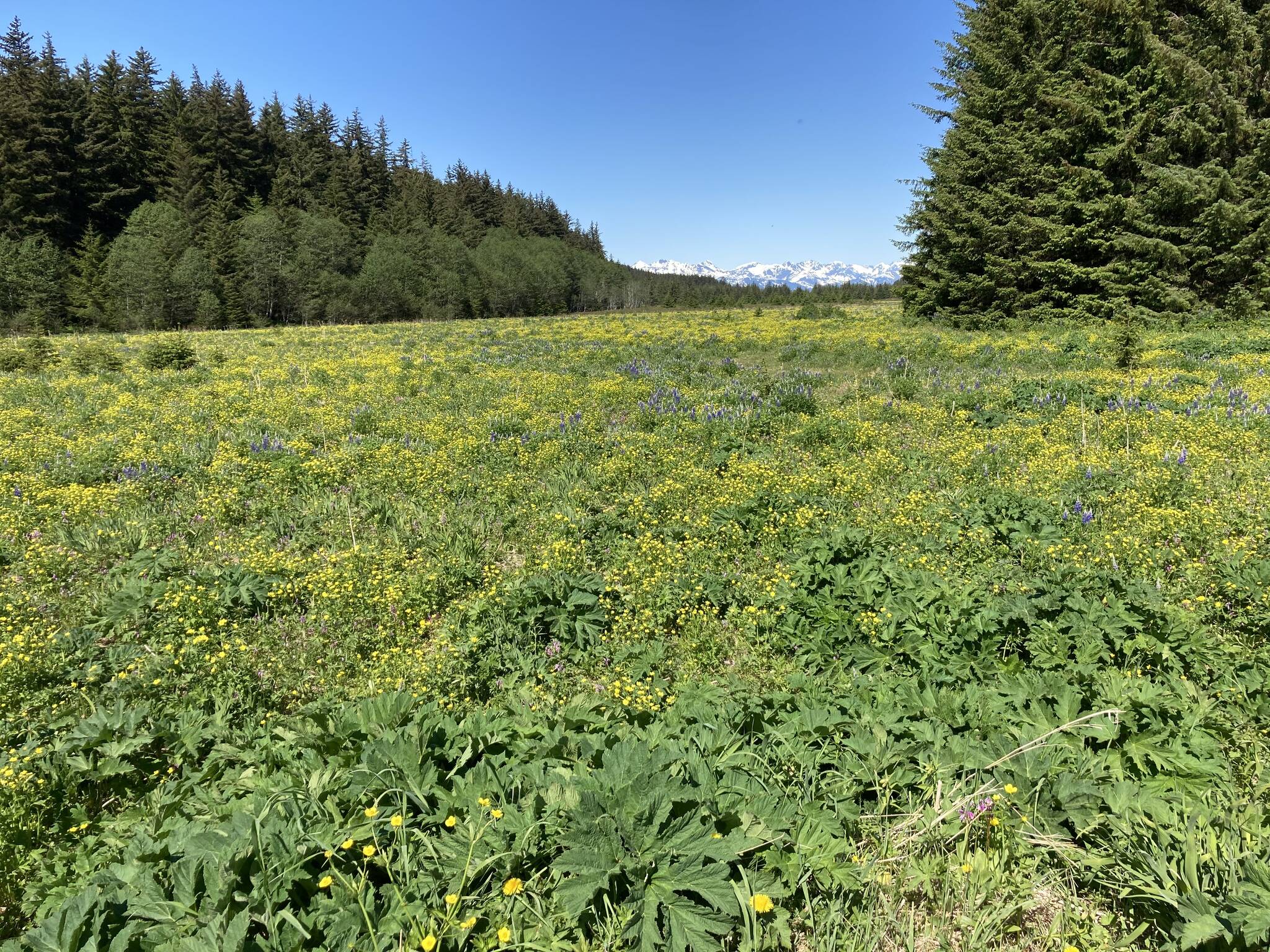By Mary F. Willson
A splendid, sunny day at the end of May called for a visit to the flowery meadows on the Point Bridget trail. The day started off well — in the first muskeg near the trailhead, we saw flowers of eight species. As a bonus, “Quick, three beers!” sounded repeatedly from the edge of the muskeg — my first olive-sided flycatcher of the year.
Bracken fern was still unfolding along the trail into the forest and a few more flowers there were added to the list. A Pacific wren sang and a sapsucker called from a dead tree. Small white butterflies made courtship pursuits and a few tiny blue butterflies flitted by. The skunk cabbages were fading, but many of the sturdy inflorescences entertained a variety of small flies and beetles; the beetles are thought to be the main pollinators of skunk cabbages, but perhaps the flies can do the job too.
Emerging into the main lowland meadows, we were greeted by a wide expanse of bright yellow, chiefly buttercups in full bloom, with some tall blue lupines adding a bit of micro-topography. Below that cheerful canopy was an understory of pinky-purple shooting stars, and in certain places there was an under-understory of white strawberry flowers. It would be a while before the irises bloom; as expected, the buds were still small and safely enfolded in the vertical leaves. Wilson’s warblers sang along the edge of the meadows and savannah sparrows popped up out of the meadow greenery briefly, before diving back into cover.
Dawdling along, looking at flowers and bugs, we finally reached the estuary of Cowee Creek and settled onto a log at the very upper edge of the beach for a picnic. There we were greeted by strident calls and a black bird with a long red bill (and oddly pale legs) marched toward us while his mate lingered down by the water. I hadn’t been scolded by an oystercatcher for ages, so this was a welcome sound.
This fellow walked up from the water-side, over a stretch of cobbles, until he was about thirty feet from our log. There he walked back and forth, parallel to the upper edge of the beach but below the highest tide line, as if patrolling a boundary. When we showed no signs of further encroachment, he settled down on a rock to watch for many minutes. He took time off to chase a raven upstream but came back to his guard duty. As we packed up to leave, he ambled down to his mate by the water. They will nest just above the high tide line, laying eggs in a shallow cup of sand.
Meanwhile, four female mergansers floated on the big creek, causing me to wonder if they were not nesting this year. A kingfisher hovered for a long time over a side channel, then dove and flew downstream out of sight, so its hunting success was unrecorded.
There are several large stands of sweetgale out in the meadows. This aromatic shrub has separate sexes, distinguishable by the flowering spikes: female spikes are smaller and bear a red tuft on the tip. As we’ve observed on previous trips out here, female individuals seem to be much rarer than males. But why?
By the time we got back to the car, we’d tallied over 30 species of flowers. Not bad for a partial tour of those big meadows. I was pleased to see small flies of several types visiting some of these flowers, along with a few small bees. Bumblebees were scarce, but a few zoomed around and one landed on a lupine. This activity was a big contrast to a recent walk up the Crow Hill trail, on an equally nice day, when not a single flower had an insect visit.
The main trail has been greatly improved by the trail crews, and it looks like they intend to deal with a few more spots. No-see’ums and mosquitos were all too active and will become more so…
• Mary F. Willson is a retired professor of ecology. “On the Trails” appears every Wednesday in the Juneau Empire.

